You get home from the grocery store and start the process of putting away all the items you purchased.
But where should they go?
Should apples go in the fridge? What about tomatoes? Are you supposed to store all vegetables in the fridge or are you supposed to leave some out? It's all so confusing…
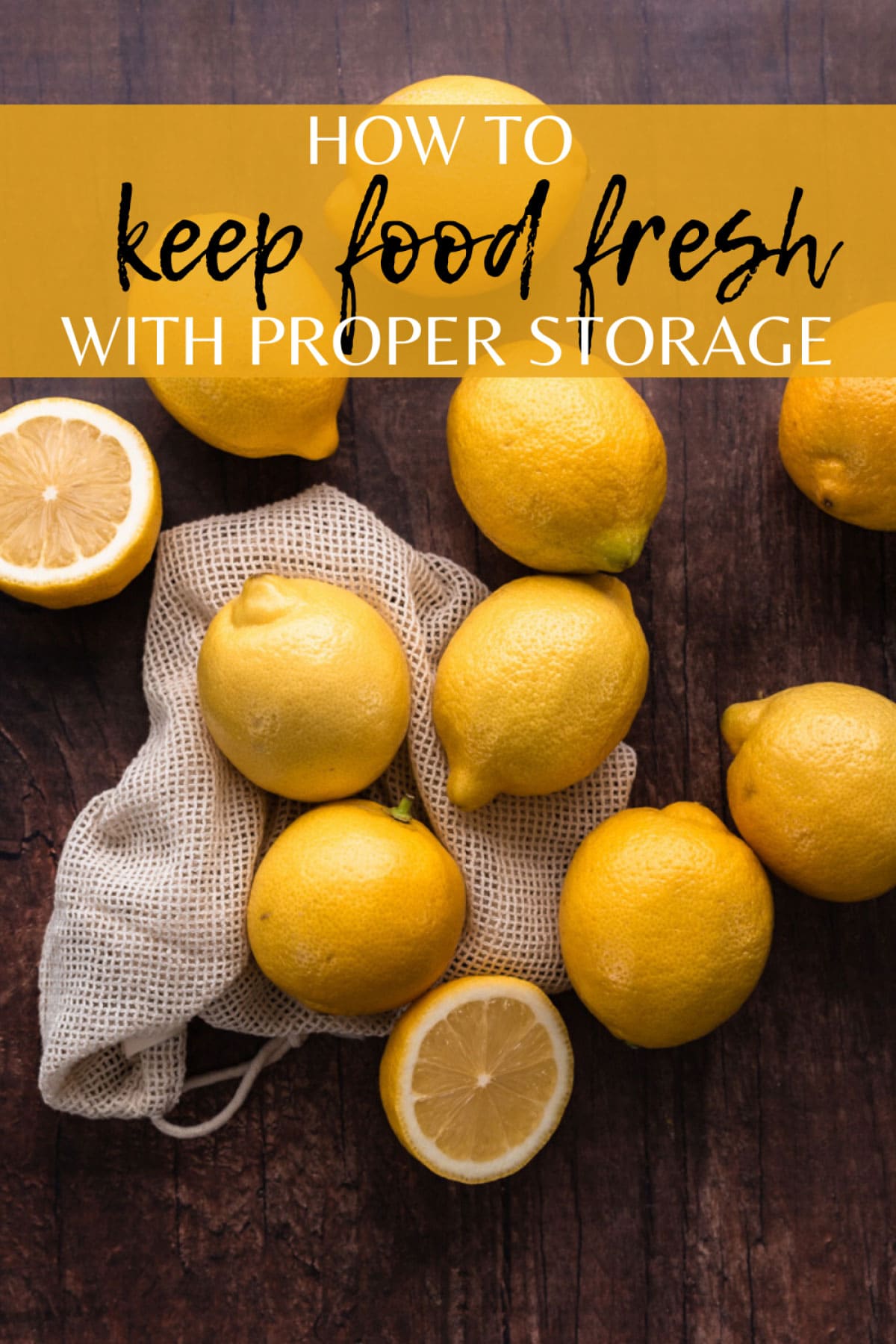
Well, you've come to the right place.
We've put together this How-to-Store-(just about)-Everything post to answer all your grocery storage questions.
We'll cover some of the basics of food storage and then go through individual foods. We also include what to do if you run out of an ingredient and how to use up extras before they go bad.
Use the CTRL + F or CMD + F functions to open the find window and search for your desired item and how to store it.
Jump to:
💭 General tips
In general, look over your produce and remove anything that looks bad. Discard any bits that look mushy or moldy. Remove the rubber band - this part will start to go bad first.
Store your fruits and vegetables separately, because fruit like apples and bananas release ethylene which can speed up ripening.
Use your eyes and nose. Use by and best by dates aren't regulated (except for baby formula) and food can still be good well past these dates (especially when stored properly).
When in doubt, throw it out. Even as someone who hates food waste, it's not worth getting sick over.
The freezer is your friend. Most foods can be frozen and this can be a great way to reduce waste. Also, learning how to can or quick pickle (radishes, cucumbers, carrots) can help preserve foods longer.
Storing in the fridge:
Your fridge temperature should be somewhere between 33 and 40 degrees Fahrenheit. You want it cold enough to keep your food chilled, but not so cold it freezes. In general, higher humidity is better for veggies and most fruit. You should be able to control the humidity level of your crisper drawers with a vent.
Most veggies should be stored in the fridge with the exception of tomatoes and our pantry friends.
Store in the pantry:
This means a cool (but not cold), dry, dark place. This could be a cabinet (not directly next to your oven) or a dedicated pantry. Fun fact: the reason we want to store these veggies in the dark is that when they are exposed to light, they think they're outside and will start to sprout.
Veggies to store in the panty: onions, shallots, garlic, hard squash like winter, acorn, spaghetti, and butternut, all types of potatoes (including yams and sweet potatoes) and rutabagas.
These veggies will keep at least a week (and likely much longer) in the pantry, but it also depends on the temperature. They'll last longer when it's cooler and will go bad faster when the temperature is higher.
Pro tip: Don't store potatoes and onions near each other. Onions emit excess moisture that causes potatoes to sprout. Keep them separate!
Storing on the counter:
Tomatoes should be stored on the countertop as well as stone fruits (peaches, apricots, plums and nectarines), bananas and citrus.
Tomatoes will become grainy if stored in the fridge, but make sure to keep them out of direct sunlight. The exception to this is if your tomato is cut, then pop it in the fridge and use it sooner than later.
A note about ethylene
Ethylene is a gas produced by fruits like apples and pears that accelerates the ripening process of other fruits and vegetables that happen to be nearby. If you've ever heard the tip to store apples with an avocado to speed up the ripening process, this is why.
For some fruit, this is helpful, after all, an unripe peach just isn't very tasty. But for veggies, ripening = spoilage.
For this reason, keep your high ethylene fruits (apples, apricots, avocados, ripe bananas, cantaloupe, kiwi, mangoes, nectarines, peaches, pears, plums) separate from your veggies.
🥗 Greens
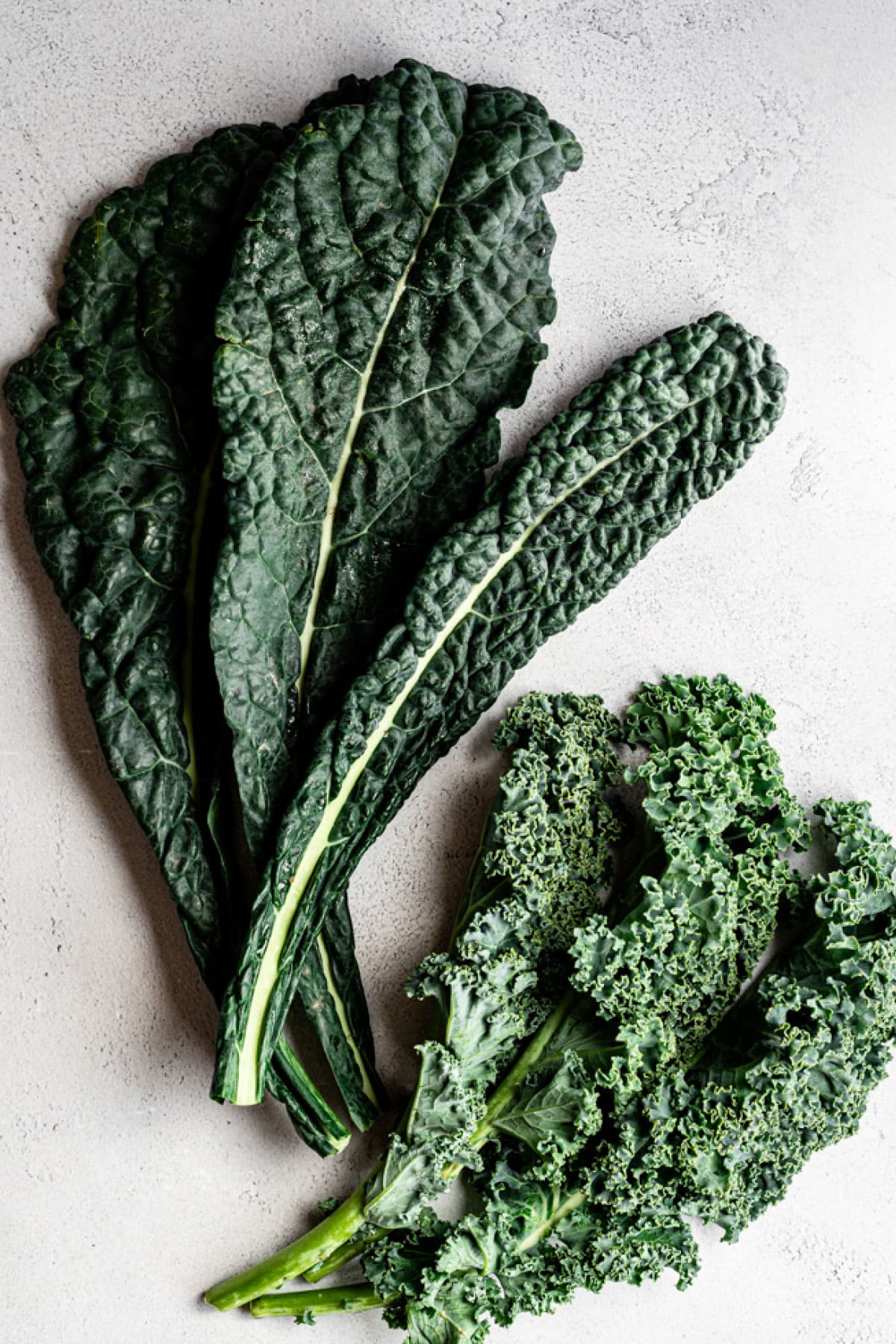
In general, heads of lettuce will last longer (1-3 weeks) than loose lettuce (4-7 days). Also, make sure your greens don't get pushed to the back of the fridge where it's prone to freezing and since lettuce bruises easily, make sure you don't shove it against other items in the fridge.
Store heads of lettuce, unwashed and intact in the vegetable crisper with a towel. Replace the towel as it gets damp. Also, don't toss the whole head of lettuce just because the outside leaves are going bad. Remove the outer leaves and you may find the inner leaves are still good to eat.
For loose lettuce, wash it and then remove the moisture. If you have a salad spinner, use it to remove the moisture. Then store in the fridge in the salad spinner or in a bag with a towel. Replace the towel once it's damp to keep your greens from getting slimy.
Packaged greens - Place a paper towel in the bag or container upon opening. The towel will absorb moisture so the greens stay fresher longer. Replace the towel every so often to keep things fresh. Be sure to remove any slimy greens as you see them.
Sturdy greens like chard, kale, mustard greens: wrap them in a slightly damp towel. Also, don't let those stems go to waste! The stems of chard, beet greens, kale and other sturdy greens are edible. Chop them up, roast them - they're delicious.
Always make sure to remove any leaves/parts that are going bad as they will speed up how quickly the rest goes bad.
Limp greens? Submerge in a bowl of ice water to revive limp greens.
Out of greens? Substitute within the same group: sturdy greens like chard, kale, mustard greens and delicate greens like spinach, arugula, watercress and dandelion greens. Any type of lettuce can be substituted for another.
Extra greens? Use extras in smoothie, sauces, soups, or give them a quick saute with some olive oil, garlic and salt for a quick and tasty side dish.
🥬 Herbs
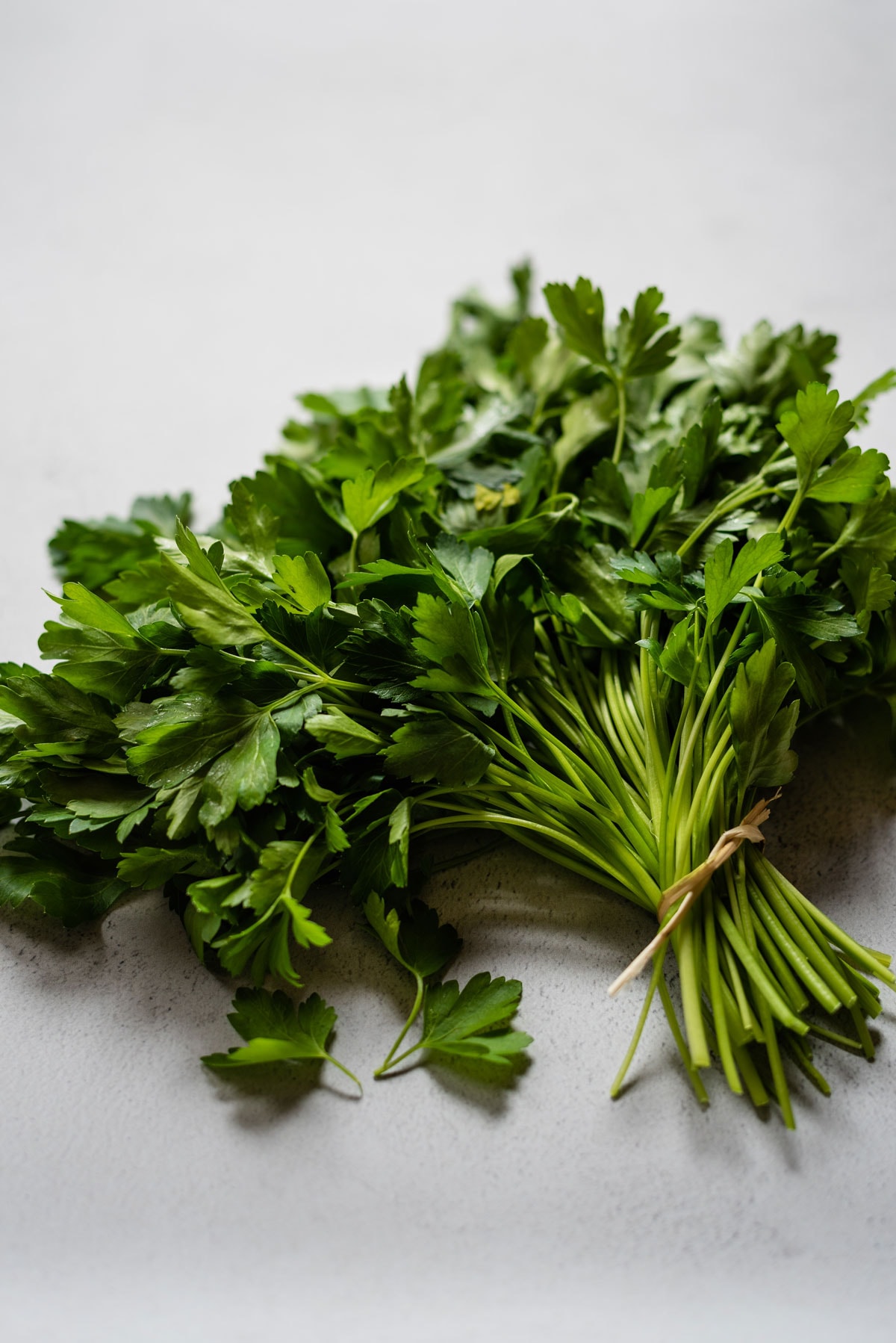
There are two main types of herbs: delicate and hardy. Delicate herbs include parsley, cilantro, mint, dill and tarragon. Hardy herbs include rosemary, sage, thyme and oregano.
Remove the rubber band immediately - this area will be the first to go bad.
Delicate herbs (parsley, cilantro, mint) - store them like a bouquet of flowers. Cut off the ends and store in a glass of water with an inch or two of water. Change the water regularly and remove any decaying pieces. Store in the door or on the counter, but avoid storing them in the back of the fridge. It also can be helpful to cover these herbs with a bag to protect the leaves. To keep waste lower, try using a silicone bag or reuse your plastic ones.
Basil is also considered a delicate herb and can be stored in a glass of water like the other delicate herbs. But keep them uncovered and on the countertop out of direct sunlight. Basil isn't a fan of the cold fridge.
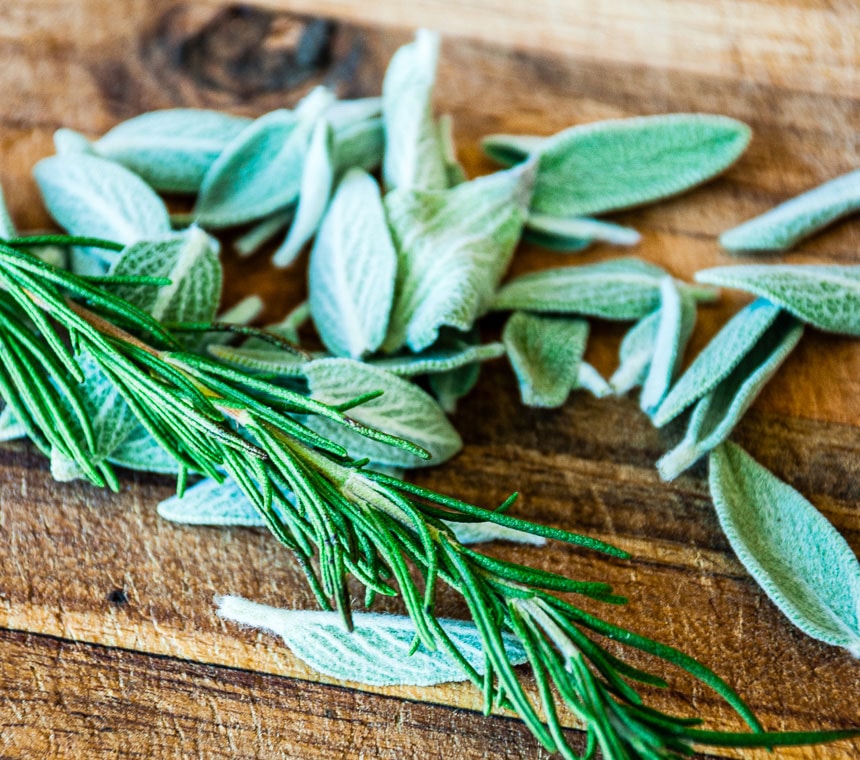
Hardy herbs need less attention. Though they can tough it out in the fridge unwrapped, but do best wrapped in a damp towel and placed loosely in a bag. Hardy herbs dry very well so if they do end up drying out a bit, save them to use as dried herbs.
You can also freeze herbs - freeze in water to use in drinks like tea or cocktails. Or freeze in oil to use with savory dishes like sauteing veggies or in soups.
Out of fresh herbs? Use dried herbs. As a general rule of thumb, use ⅓ the amount of dried herbs that you would fresh. For example, if a recipe calls for 1 tablespoon fresh herbs, you can use 1 teaspoon (⅓ of a tablespoon) of dried herbs instead.
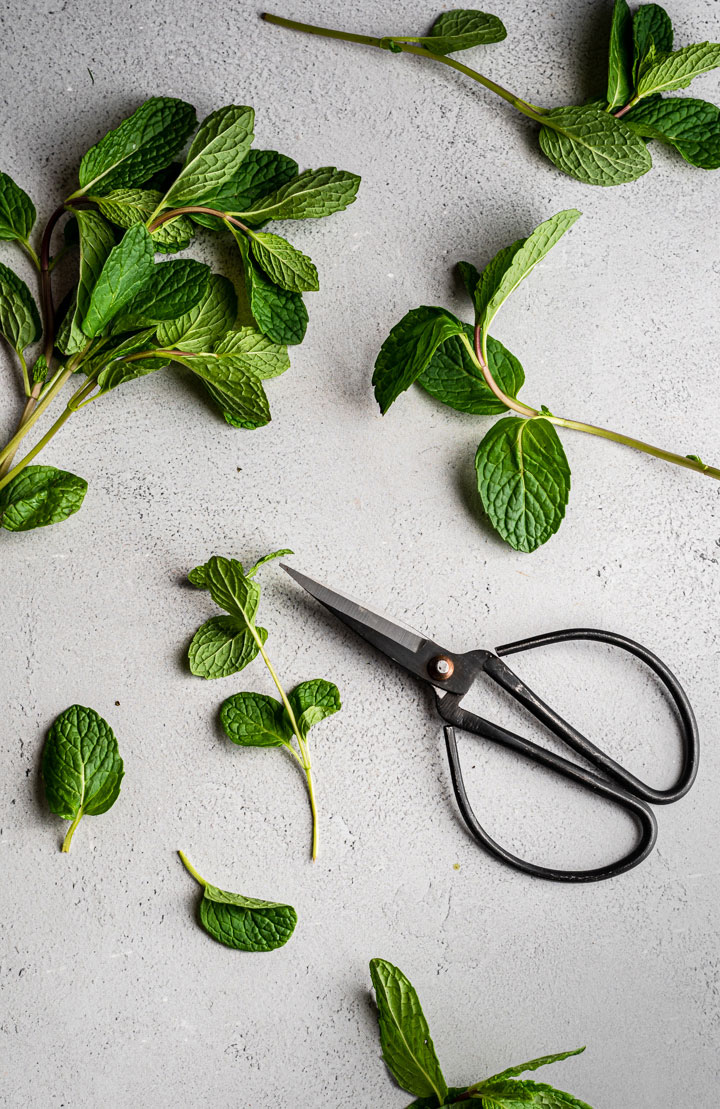
Though fresh herbs can add great flavor to a dish, if a recipe calls for a small amount (i.e. just for garnish), you could omit it or use dried herbs instead. Also think about substituting - you can use parsley and cilantro fairly interchangeably (except maybe in an Italian dish...). You can also use those carrot tops instead of parsley.
Have extra herbs that are about to go bad? Toss them in a smoothie (yes, even herbs!), a cocktail (like this Cilantro Lime Margarita!) or make a sauce like our Italian Green Sauce, pesto, chimichurri or zhoug with them.
🍎 Fruits and vegetables 🥕
🍎 Apples
Store in the fridge (they don't like warmth) in the crisper drawer. Apples with tougher skins tend to last longer. Drizzle lemon juice on top to prevent browning of cut apples.
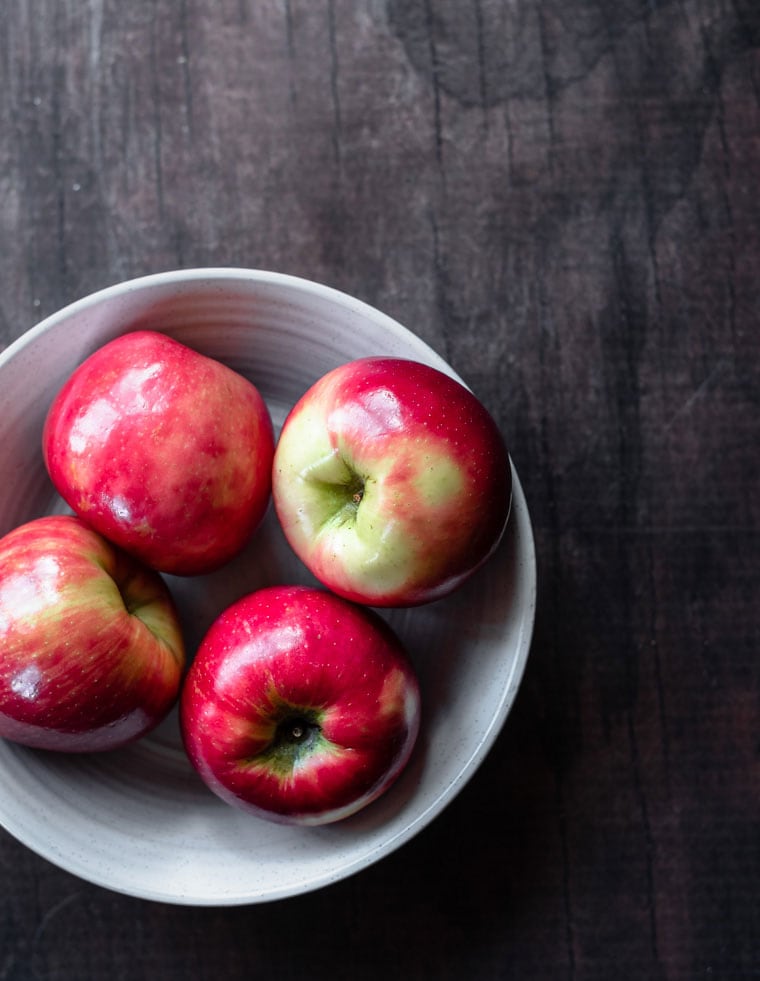
Extra apples? Make applesauce, baked apples, apple chips or add them to your oatmeal.
Asparagus
Before placing in the refrigerator, trim a half-inch from the ends of the asparagus. Stand the asparagus up in a glass or jar with about an inch or two of water, making sure all the ends are sitting in the water, then store in the fridge.
If the water looks cloudy, simply change it as needed.
Many recommend covering the bunch in a plastic bag, but you can also use a silicone bag or leave it without the bag. Just be sure to use them within a couple of days or they'll start to go limp.
You want the bottom of the stem to be moist, with the rest of the asparagus remaining dry. Don't wash or soak your asparagus in advance, as this will cause the veggie to spoil quickly.
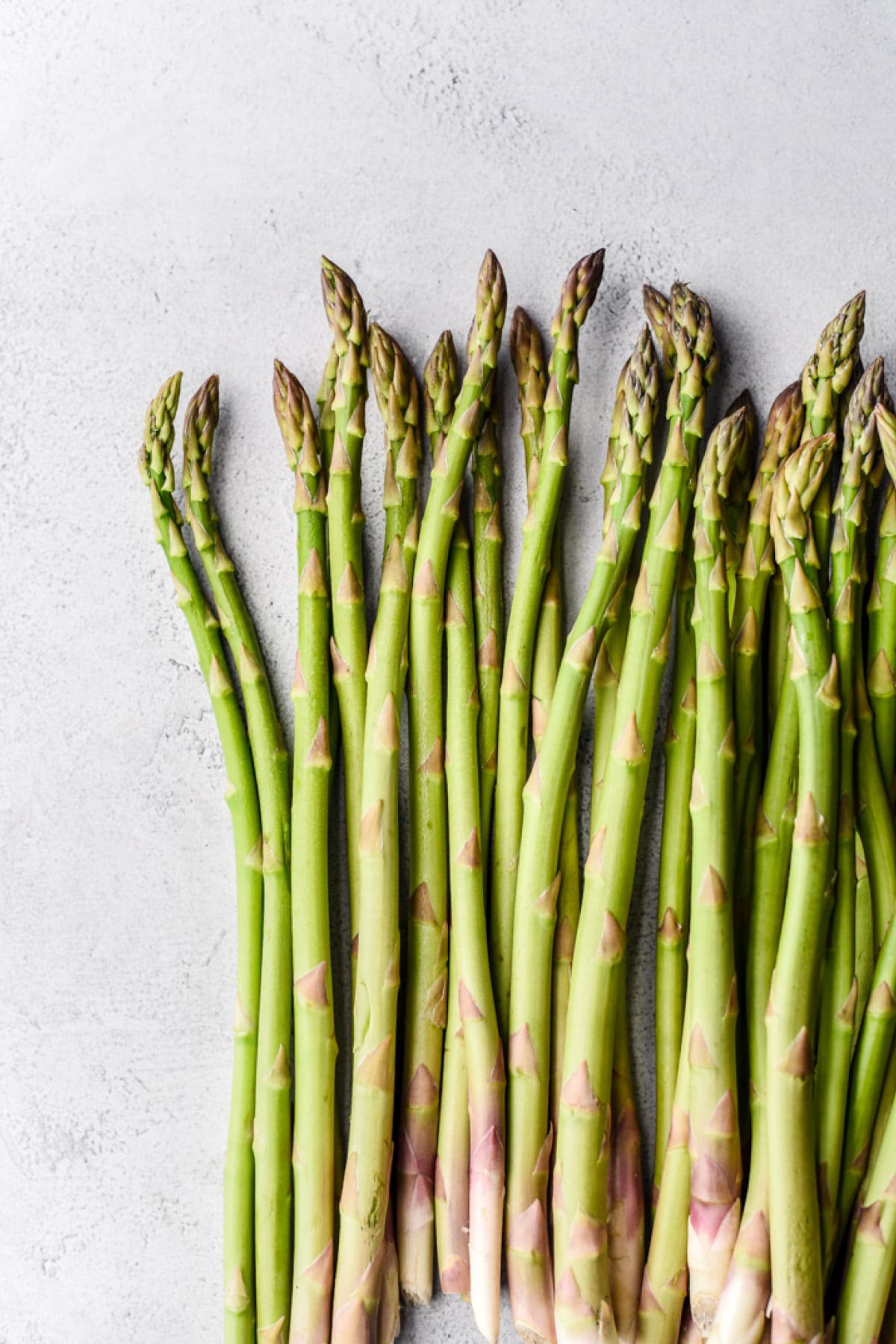
Alternatively, instead of storing in water, you can also wrap the fresh-cut ends with a wet paper towel and store in the vegetable drawer of the refrigerator. Keep in mind that using this method they won't last as long, and will lose their flavor more quickly.
Extra asparagus? Roasted or grilled asparagus makes for a yummy side dish. Check out more ideas for using asparagus in our post all about asparagus.
🥑 Avocado
Unripe avocados will ripen on the counter within a few days, but you can put them in the refrigerator to slow the ripening process.
Alternatively, store your avocados in a paper bag with a banana or apple to speed up the ripening process.
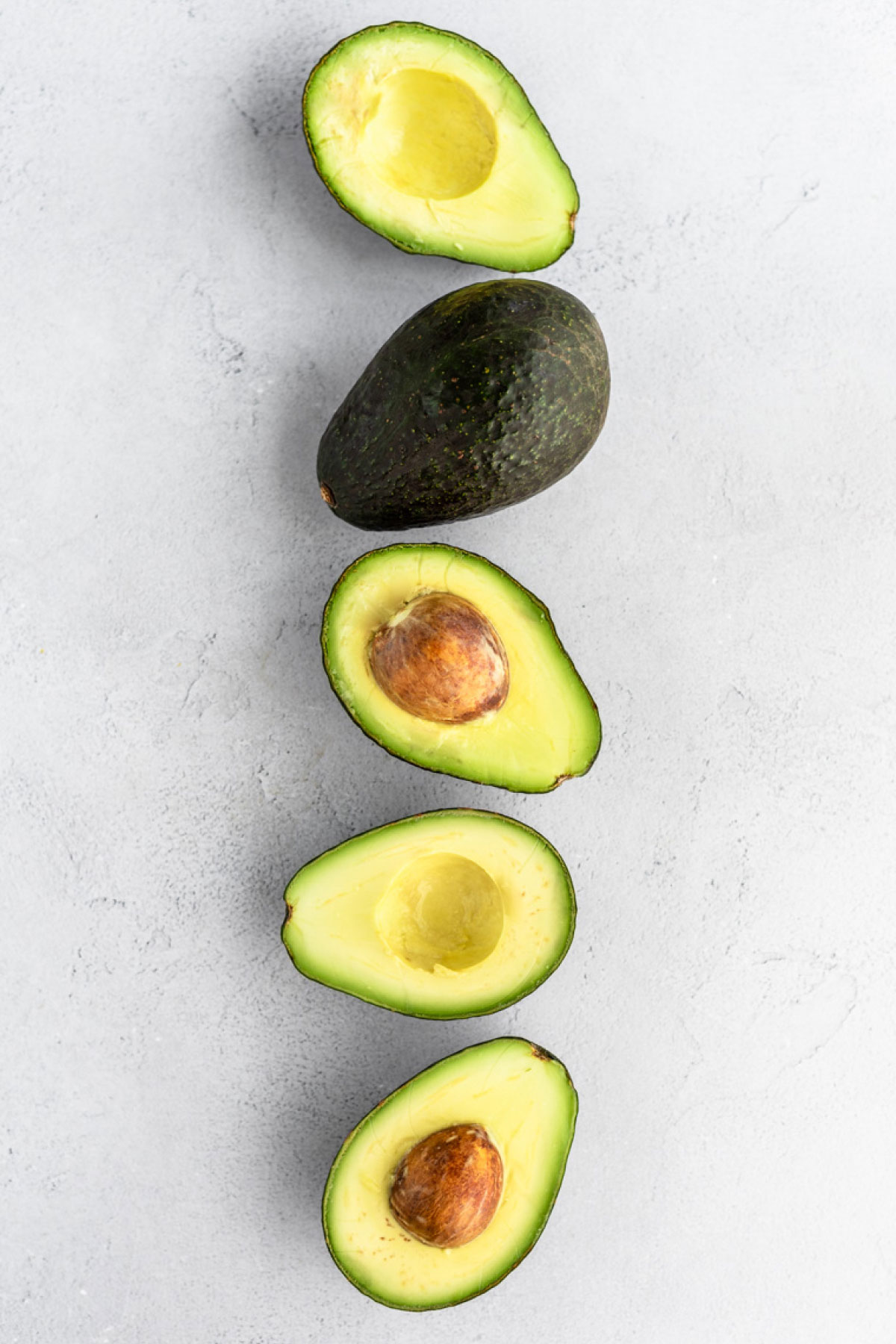
If you've cut into an avocado, you can slow the browning process by rubbing some lemon or lime juice on the cut part. Store in an airtight container in the fridge.
You can also freeze whole avocados. Simply rinse under warm water to thaw until they're soft enough to cut into. You can also store freeze mashed avocado.
Extra avocado? Make an avocado rice cake, avocado toast, guacamole, an avocado crema for tacos or add them to a smoothie.
Out of avocado? If it's for a garnish, try adding another creamy condiment like yogurt instead.
🍌 Banana
Hanging bananas prevents bruising and decreases the chance of exposing the banana flesh to oxygen, which will only make it ripen faster. Once bananas are ripe to your likening, store them in the fridge - their skins will turn black, but the insides will be perfect, as least for a couple days. Some find it helpful to wrap the stems in plastic which can help slow the release of the ethylene gas that causes ripening.
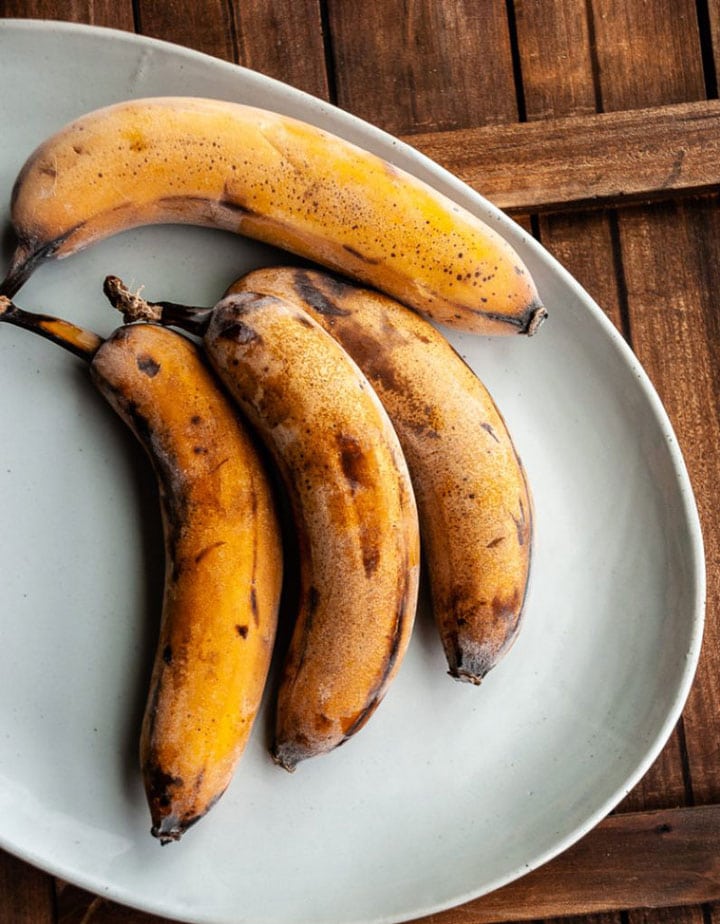
Extra banana? Store overripe bananas in the freezer for banana ice cream, banana bread, banana muffins, banana pancakes or to use in a smoothie.
Beets
Store beetroots separate from their greens. Cut greens about an inch from the roots and store their greens like other leafy greens. Store the beetroots in your crisper drawer.
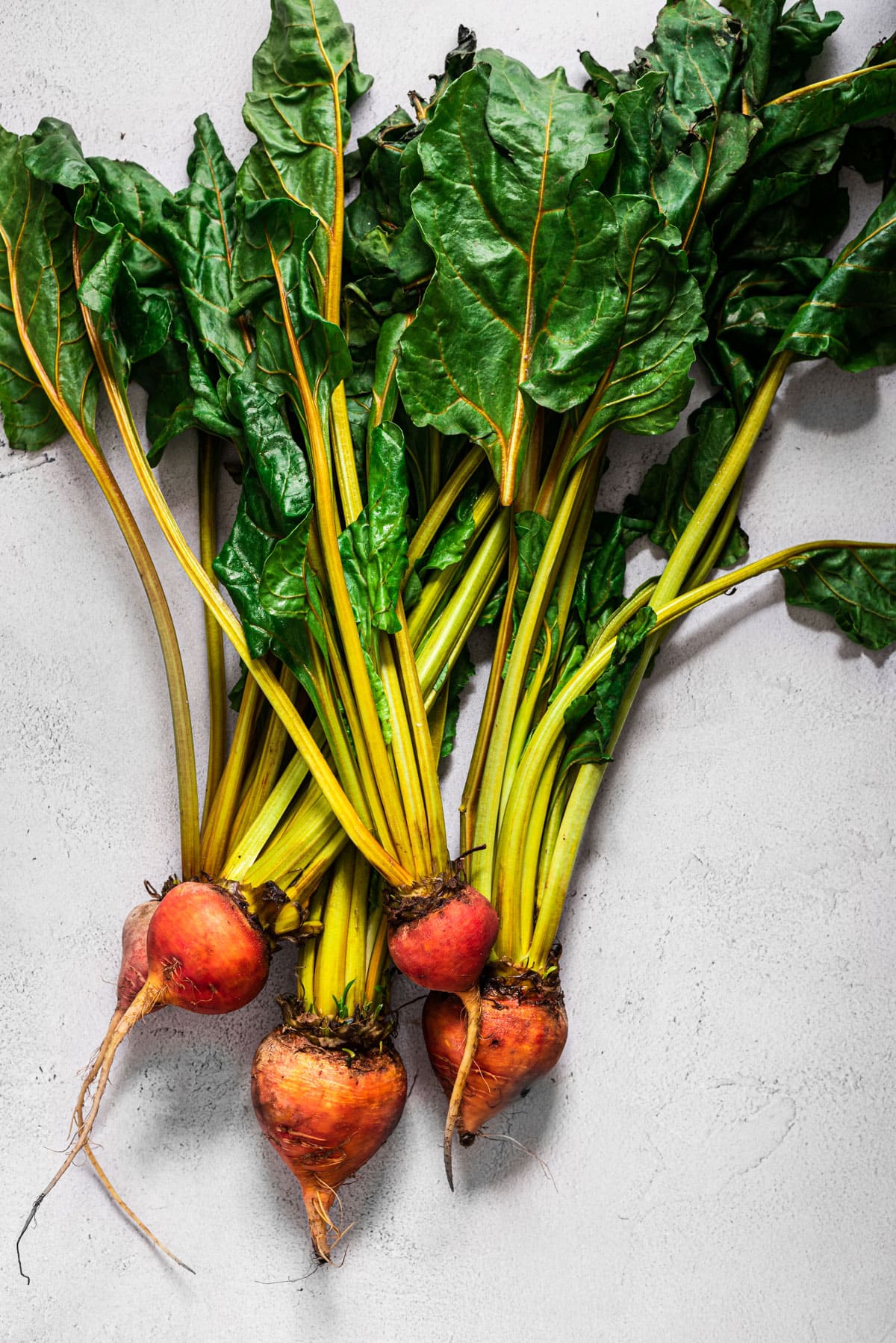
Extra beets? Pickle them for a long-lasting beet condiment or make beet chips or beet hummus.
Check out more ideas for using beets in our post all about beets.
🍓Berries
If you have a couple minutes, as soon as you get home from the store, go through your berries and remove any moldy or bruised berries. Store unwashed berries in their original container. Rinse gently just before eating. In general, blueberries last longer than raspberries, strawberries, or blackberries.
Extras berries? Use in oatmeal, or smoothies, wash and freeze on a baking sheet, then combine in a container in the freezer for tasty berries all season long!
🥕 Carrots
If your carrots came with their greens attached, remove them as soon as possible to prevent the greens from continuing to draw out the root's moisture. Store them in a container of water and store in the refrigerator. Whole carrots and baby carrots stay nice and crunchy in their cold water bath. Swap out the water if the water starts to look cloudy.
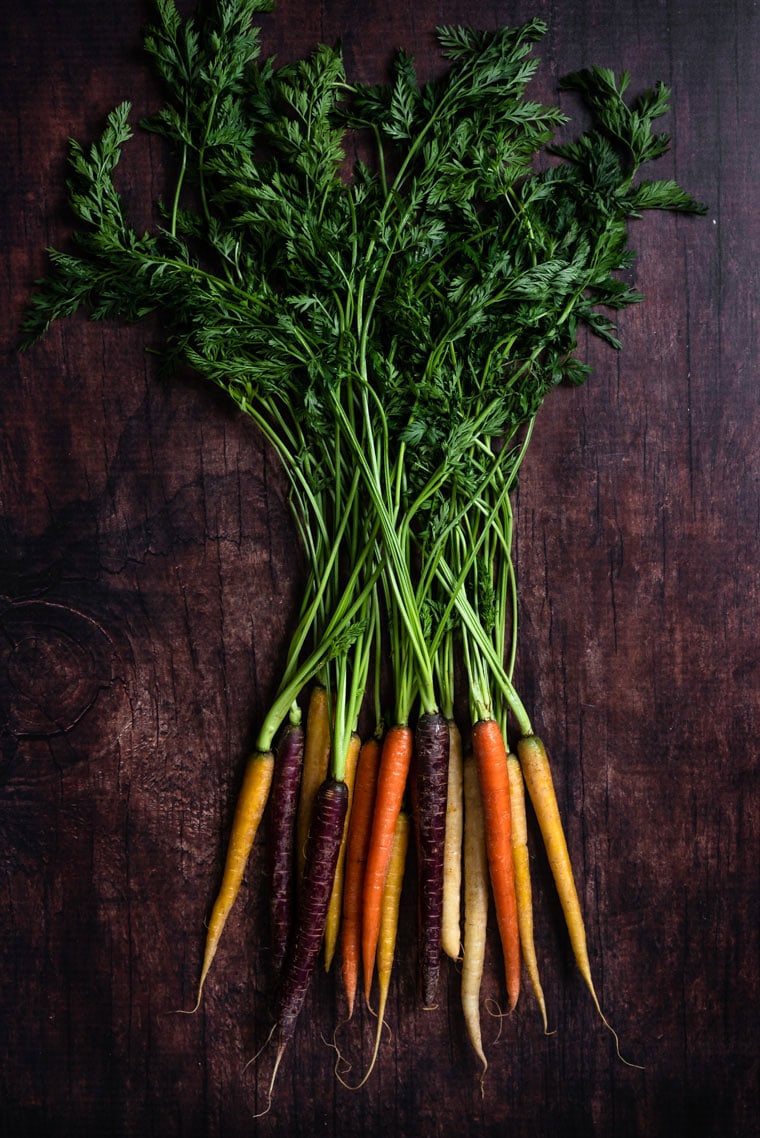
Extra carrots? You can use carrots in just about everything. Carrots serve as the base to pretty much every soup and many meals in mirepoix, raw as a snack, as a simple side dish like our roasted carrots with dukkah, made into carrot soup, a carrot dip or even added to oatmeal.
Check out more ideas for using carrots in our post all about carrots.
Celery
The best way to store celery is wrapped in aluminum foil, but don't crimp the edges. If you're careful, you can use the same piece of foil multiple times.
By storing it in foil, you allow moisture to stay, but don't trap the ethylene gas that would cause the celery to spoil faster.
If your celery becomes limp, trim its base and place in a glass of water in the refrigerator until it's crisp again.
Extra celery? Try a celery salad to add to just about any soup.
Out of celery? Most likely, it can simply be omitted. For flavor, you can also use celery powder.
🍒 Cherries
Get those cherries in the fridge as soon as possible. Wash them with cold water just before eating. Cherries can also be frozen pitted or intact.
🍋 Citrus
You can keep citrus at room temperature, but they will harden much faster compared to when they're stored in the refrigerator. At room temperature, citrus fruit can be safely stored at room temperature for three to four days.

Extra citrus? Juice them for orange juice, use extra limes in a margarita, add them to your salad like our jicama kale salad with citrus, make a citrus-based salad dressing.
Out of citrus? Depending on the recipe, you may be able to substitute vinegar instead - especially in salad dressings. Check out our apple cider vinegar dressing.
🌽 Corn
Ears of corn should be stored in their husks. Corn is best eaten the same day it's purchased. Store unhusked corn loose in the refrigerator. For the best flavor, use it within two days.
Corn can also be removed from the cob, blanched and frozen.
🥒 Cucumbers
Cucumbers should go straight into the refrigerator crisper drawer to keep them fresh and crisp. They will last between 5 to 7 days in the fridge as long as excess water and humidity is kept to a minimum.
Storing them wrapped in a paper towel can keep excess moisture out.
Also try homemade pickling!
Garlic
It's best to store garlic whole (don't separate the cloves). It's best to store garlic in a cool, dark place. Think the pantry or cupboard.
Don't store in the fridge as it will sprout in a few days in the cold. Although safe to eat, sprouted garlic can taste bitter.
Chopped garlic will keep for a few days in the fridge, but be sure to use it as quickly as possible and keep it in a sealed container or everything in your fridge will start to smell like garlic...
It's best to store garlic without a bag, but if you want it in a bag, make sure it's a paper one (no plastic).
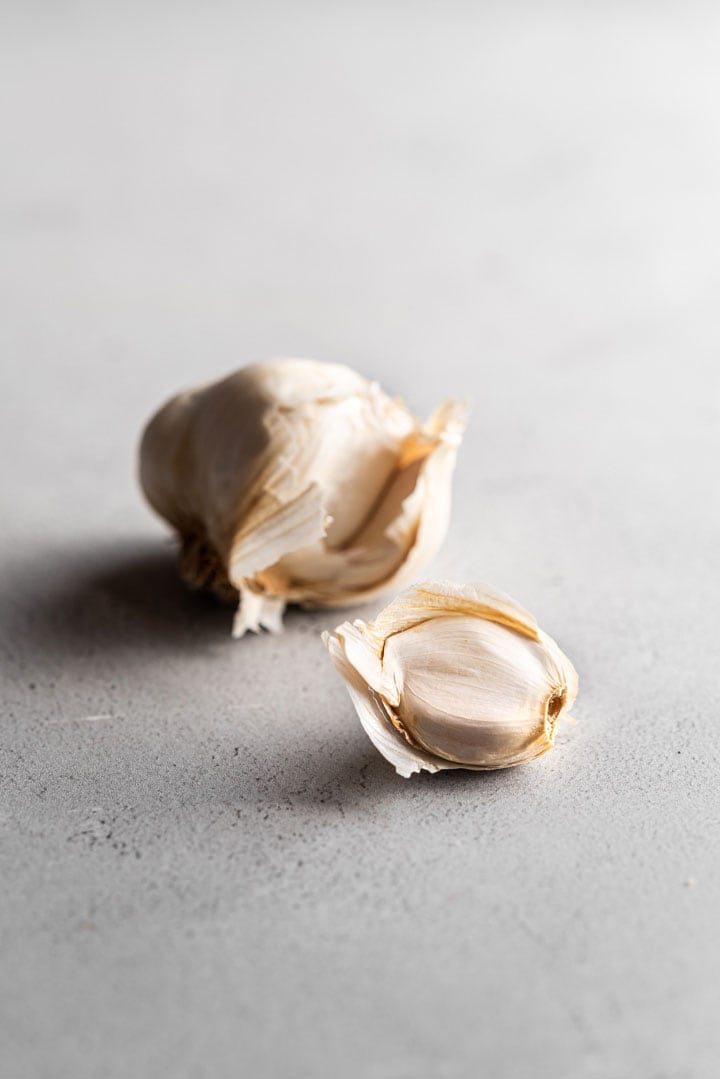
Extra garlic? Make roasted garlic (terrific on pretty much everything, but especially toast, in salad dressing or hummus) - it keeps well refrigerated for up to two weeks or frozen for up to three months.
You can also make garlic confit, which is garlic preserved in oil. You can then use the garlic and infused oil in many many dishes.
Out of garlic? Use garlic powder instead. Opt for garlic powder instead of garlic salt so you can control how much garlic and salt flavor you want.
Ginger
It's best to store ginger in the refrigerator intact, with the peel still on. Keeping it in a bag in the crisper drawer will help it fresher longer. You can store cut ginger in the refrigerator, but it won't keep as long.
You can also preserve peeled ginger by covering it in an alcohol like vodka. It will keep several weeks stored this way. Toss it when the mixture starts to get cloudy.
My favorite method is freezing ginger - it will stay good indefinitely. Make sure to leave the peel on and simply remove it from the freezer when you need it.
You don't need to let it thaw completely, just enough to cut off what you need. You can grate what you need and return the rest to the freezer.
Extra ginger? Add to tea, dressings, soup (like our carrot ginger soup), or make pickled ginger.
Out of fresh ginger? Use ground ginger instead - this works better in cooked dishes. Try using ⅓ of the amount of powdered ginger as fresh (so use one teaspoon powdered ginger if the recipe calls for one tablespoon-three teaspoons-of fresh ginger).
🍄 Mushrooms
Mushrooms should be stored in a paper bag in the refrigerator rather than in a plastic bag. They have a high water content so excess moisture can become trapped in a plastic bag, causing them to turn slimy.
A paper bag lets them breathe and keeps them fresh for longer.
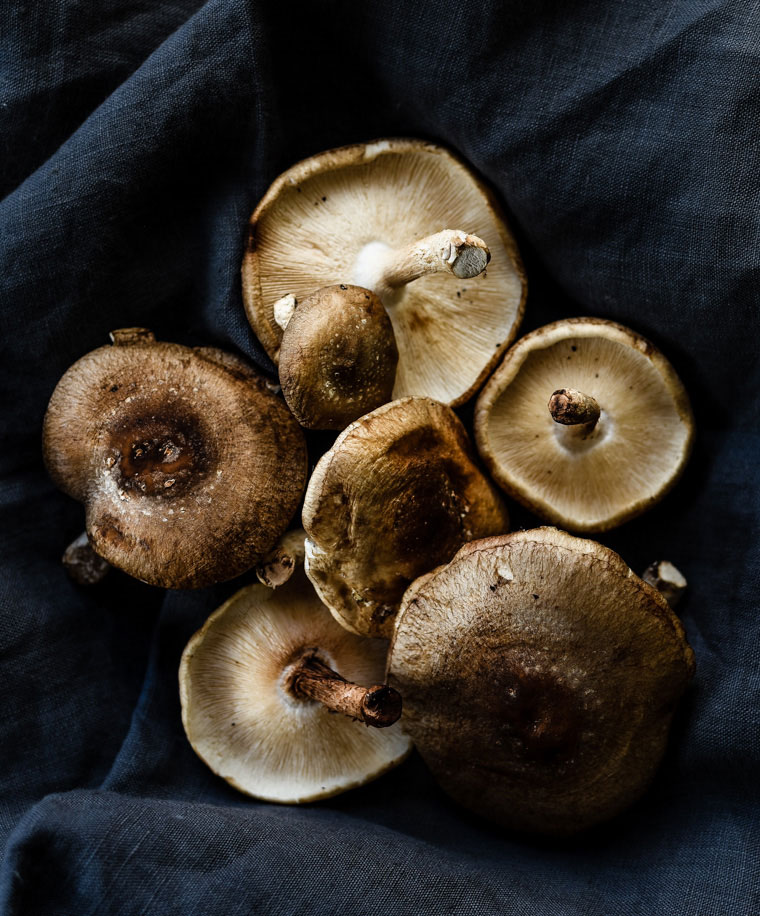
Extra mushrooms? Drying mushrooms is a great way to preserve them. You can also buy dried mushrooms and rehydrate them as needed.
Also don't toss the ends, wash off any dirt and use the ends of mushrooms in stock.
Onions
To maximize their storage life, store your dry bulb onions in a cool, dry, well-ventilated spot, but don't store them in the fridge (they'll mold faster in that moist environment).
Do not store them in plastic bags; they need to be able to breathe.
You can store onions (long-term) in pantyhose (yep, you read that right). Simply cut the leg of a pantyhose, add an onion, tie the pantyhose into a knot above the onion and continue adding onions in this way until you reach the top of the pantyhose.
Then just cut a slit in the side and grab your onion - you can reuse the pantyhose too!
Store cut onions in a sealed container in the refrigerator, and use them within 7 to 10 days.
You can also freeze sliced or chopped onions to use in recipes, although they won't be as crisp when thawed. Because of this, they work best in cooked dishes.
Extra onions? Make caramelized onions.
Out of onions? Use onion powder or another vegetable in the onion family like shallots or leeks.
🌶 Peppers
Store them in your refrigerator crisper drawer. In the fridge, raw peppers will last between 1 and 2 weeks and cooked peppers will typically last 3-5 days.
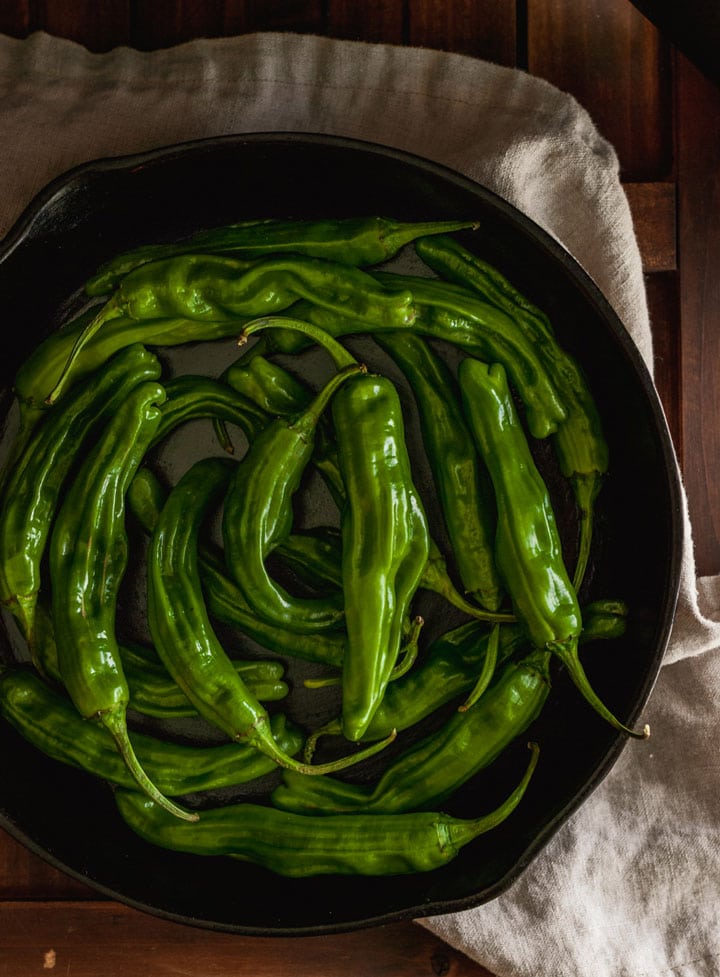
Extra peppers? Make fajitas or eat raw as a snack (maybe not the hot variety, unless that's how you roll) or make pickled peppers.
Out of peppers? Jarred peppers can be a great substitute or simply increase the amount of the other veggies in your recipe.
🥔 Potatoes (sweet and regular)
They're best stored in a cool, dark environment. Out of sunlight, with breathing room, not in the fridge.
The cold refrigerator rapidly turns starches into sugar, resulting in a discolored, sweet-flavored spud. Don't store in a sealed plastic bag, but instead use a mesh bag to allow for airflow.
Don't store them next to onions as they will encourage those taters to sprout. Though we want them to be in a cool, dark place, that doesn't mean out of sight, out of mind.
Check on them every once in a while and remove any potatoes that shriveled or gone soft so they don't cause more to go bad.
Don't wash them before storing, wash just before eating.
Sprouted potatoes are still fine to eat as long as they aren't shriveled. Simply remove the sprout and any soft spot around the sprout before cooking.
Also make sure to remove any green skin if your potatoes have it.
Radishes
For short-term storage, you can store radishes (with their greens attached) in a shallow bowl of water. They'll stay fresh on the counter for a couple of days and for up to 5-8 days in the fridge.
Alternatively, remove the greens and taproot ends and store the roots in a sealed bag with a damp towel in your crisper drawer. Store the greens like other leafy greens.
Radishes are also delicious pickled and can be preserved for a long time this way. I love radishes in this spring asparagus potato salad.
🍅 Tomatoes
Keep your Tomatoes on your kitchen counter, uncovered and away from direct sunlight. This will allow them to continue to ripen and develop their flavor.
Tomatoes will last between 3-4 days stored on a countertop.
Once they're ripe, you can put them in the fridge to extend their shelf life, but it may impact their flavor, so it's best to use them before that point.

Extra tomatoes? Make tomato soup, tomato paste, oven-dried tomatoes, canned or refrigerated/frozen tomatoes, marinara sauce, the possibilities are endless.
🍞 Bread and baked goods 🥧
In general, it's best for flavor and texture to store bread items outside of the fridge (the fridge dries them out and causes some flavor loss), but the cool temps can slow bacterial growth.
🍞 Bread
If you plan to use bread within a few days, keep it at room temperature in a bread box or paper bag to reduce moisture loss and maintain a crisp crust.
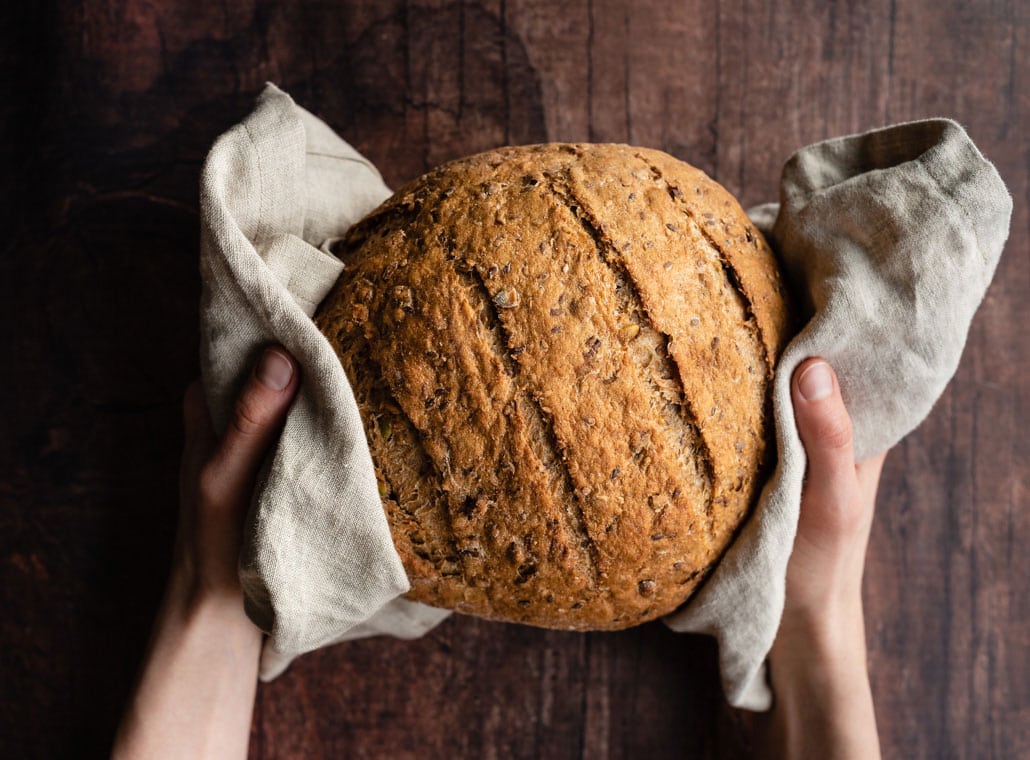
For longer-term storage, wrap tightly and store in the fridge. You can also freeze bread - wrap it tightly and thaw by either toasting slices or let it come to room temperature in its packaging and warm in the oven.
If you see any mold (fuzzy bits), the whole loaf/bag is likely contaminated. Do not eat it.
Extra or stale bread? Make breadcrumbs, stuffing, croutons, Panzanella salad, French toast, bread pudding or a strata.
🌮 Tortillas
Store tortillas in a sealed container (the original bag works). You can keep them out of the fridge for a few days, but they last much longer stored in the fridge.
They can also be frozen and thawed in the fridge.
Homemade tortillas won't last as long, but will still keep for a while if stored properly (in a sealed container).
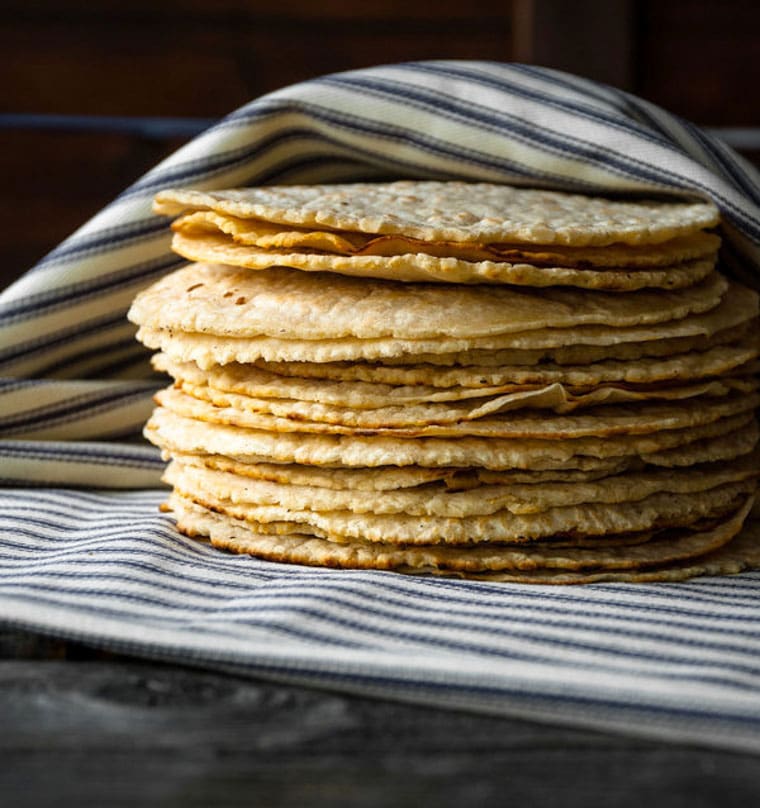
Extra tortillas? Make tacos, enchiladas, chilaquiles or bake them into tortilla chips.
🥧 Baked goods
Store items like cookies, brownies, muffins and pastries in an airtight container on the countertop. They should last up to five days at room temperature.
Pro-tip: you can add a slice of bread to help regular the moisture level (the bread will absorb the moisture and keep bacterial growth at bay).
Dairy-heavy items like custards or cream pies should be refrigerated.
Most baked goods (except for custards) freeze well.
🥛 Dairy and eggs
It's best to store eggs and dairy on the middle and lower shelves, near the back of the fridge. The door is NOT a good place to store them because of how much the temperature fluctuates.
🍳 Eggs
Store eggs in their original container. They will stay fresh three to five weeks after the sell-by-date.
To check for freshness, place eggs in a bowl of water; if they float, they are past their prime and should be composted.
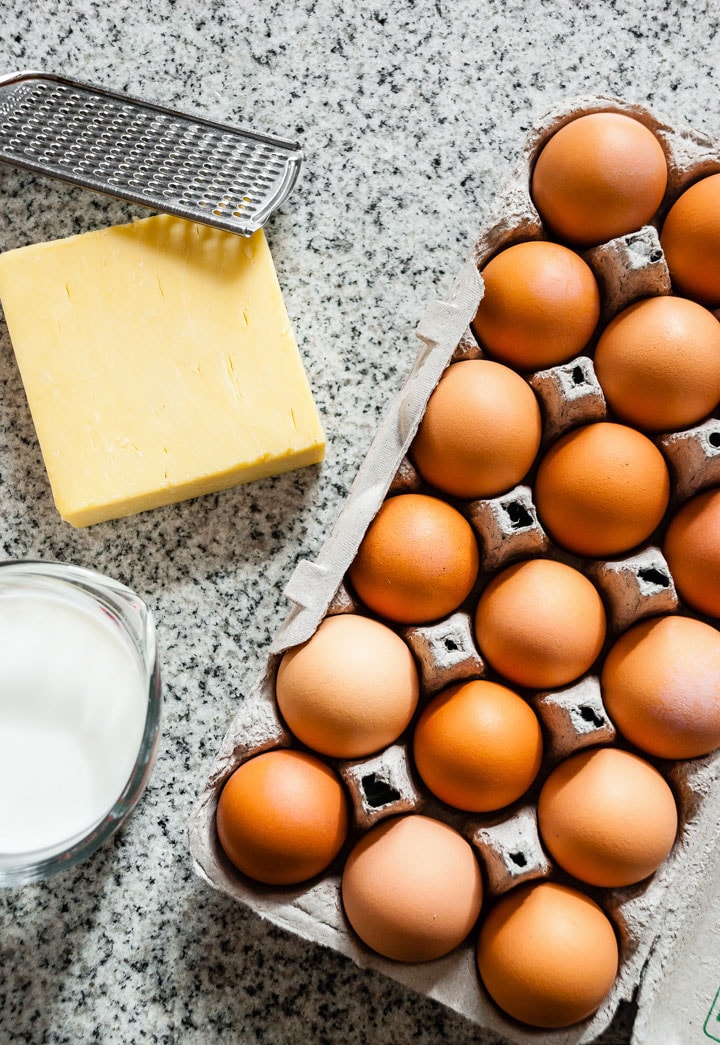
Store cracked eggs, either whole or whites or yolks separately, in an airtight container and use within two days.
Older egg whites are great for whipping meringues, and egg yolks are great for custards and curds.
You can always throw in that single egg white or yolk into scrambled eggs, frittatas or stratas.
You can also freeze cracked (not in their shell) eggs. This can be helpful for eggs to be used in baking, but you won't get a fried or sunny-side up result from frozen eggs.
Too many eggs? Make a frittata, hard boil them and have them in a salad (like our spring asparagus potato salad), on toast or as a simple snack.
Out of eggs? If you're baking, you can use a flax or chia egg instead.
🧀 Cheese
Hard cheeses last longer (6 months to a year) than soft ones (one to two weeks).
It's best to remove cheese from its plastic wrapping as the plastic doesn't allow the cheese to breathe and will allow moisture to accumulate causing mold.
Transfer hard cheeses to wax paper, foil or cheese paper all of which help circulate air without allowing the cheese to dry out.
Cheeses should be kept together in a lidded dish or box (this will also help keep the cheese aroma out of the rest of your fridge.
If you notice any pink mold on soft cheeses, it's time to throw it out. If your hard cheese has mold, you can slice off at least 1 inch around and below the moldy spot.
You can freeze cheese, but it often comes at a detriment to the texture. Pre-shredded cheeses are great candidates for freezing and you'll likely get away with freezing hard cheeses without noticing a big difference.
Soft cheeses and cheeses with holes don't freeze well. And any frozen cheese is best used in cooked dishes as opposed to on a cheeseboard.
Extra cheese? Add it to a quiche, cheese dip, savory baked goods, savory cheddar muffins or a frittata.
Out of cheese? If you have some milk and some lemon juice or vinegar, you can make ricotta cheese or paneer in an afternoon.
Also try your hand at making your own vegan cheese by soaking and blending cashews with nutritional yeast.
In general, nutritional yeast can provide that umami and cheesy flavor for popcorn and baked goods in a pinch or use for a vegan dish.
🥛 Milk and cream
These should be kept in the coldest part of the fridge. It's usually good about a week past its sell-by date, but your nose will tell you for sure.
Extra milk? Make cheese! Or yogurt, a milkshake or ice cream. Use it in oatmeal, baked goods, marinades or soups.
Out of milk? Depending on your recipe, you could substitute stock/broth, almond or coconut milk or even just water. You can use milk instead of cream for most recipes too.
Yogurt
Yogurt should be kept in the coldest part of the fridge. It usually lasts about 10 days past its sell-by date, sometimes longer. You'll likely see red mold when it should be tossed.
Extra yogurt? Use yogurt in smoothies, baked goods or as a sour cream substitute on tacos.
Out of yogurt? If you have time, make your own yogurt with milk and a little leftover yogurt. Depending on the recipe, you may be able to substitute in sour cream, kefir, cream cheese or ricotta.
🥜 Nuts, seeds, whole grains and flour
🥜 Nuts and seeds
Store nuts and seeds in the fridge or freezer to extend their shelf life and keep them from going rancid.
Rancid nuts and seeds aren't dangerous to eat, but they don't taste very good.

Extra nuts? Make granola or nut butter or trail mix.
Out of nuts? You can often swap nut for nut. Use walnuts instead of pine nuts in pesto, sprinkle on cashews instead of peanuts, etc.
Whole grains
Dry goods will last roughly a year stored in a dry, cool place.
Pasta should be kept in its original packaging, while flours, oats, rice and other grains are better kept in airtight containers.
Flour, grains and legumes can also be frozen in airtight containers to extend shelf life.
It's best to store whole grains including flours in the fridge or freezer to extend their shelf life and keep them from going rancid.
Out of flour? Try swapping it for a different flour like whole wheat flour for all-purpose. In some recipes, you can even use nut-based flour instead of regular flour.
🥫 Pantry Items
Olive oil
Buy olive oil in dark glass bottles or a tin and store in a cool, dark place like a cabinet or pantry.
Don't store in the fridge - condensation can accumulate and impact the flavor.
Also, don't keep it by your stove, the heat can cause it to go rancid more quickly.
Vinegar and vinegar-heavy condiments
These are acidic and don't spoil quickly so they can be kept out of the fridge. Oil-based condiments, like mayonnaise and pesto, need to be refrigerated.
🥫 Canned goods
Most will last several years and should be safe to eat as long as they aren't swollen or heavily dented.
🥩 Meat, poultry and seafood 🍗
Meat, poultry and seafood
Raw meat should be stored on the bottom shelf of the refrigerator.
If there's dripping potential, put the meat on a plate or tray so you don't end up with raw meat drippings all over your fridge.
Use raw meat, poultry and seafood within a few days of purchase - the sooner the better. If you don't plan on using it within about 2-3 days, freeze it. You can thaw it in the fridge overnight when you're ready to use it.
Thawing in the fridge is always the best option (don't ever thaw on the countertop - the warm temp makes for great bacteria breeding grounds).
Thawing in the microwave often results in uneven thawing, but it can work in a pinch.
Sandwiches, salads, soups and tacos are great ways to use up leftover meat, poultry and seafood.
Out of meat? Use half meat and half beans in recipes like tacos, chili, and soups.
I hope this post has been helpful!
What's your favorite food storage tip? Comment below and share your knowledge!


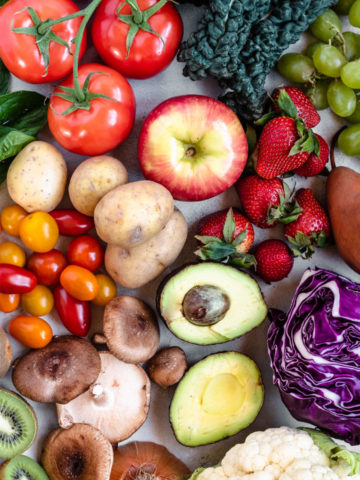
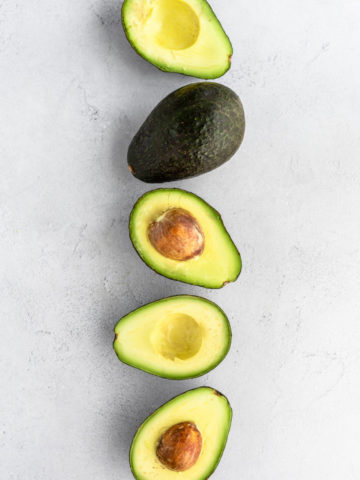
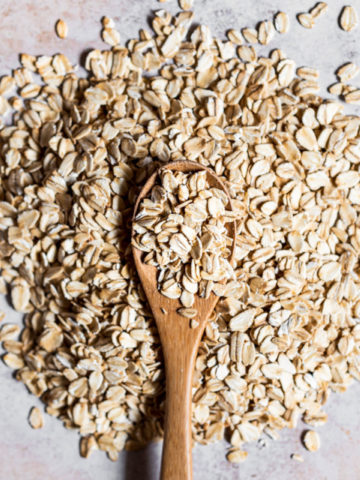
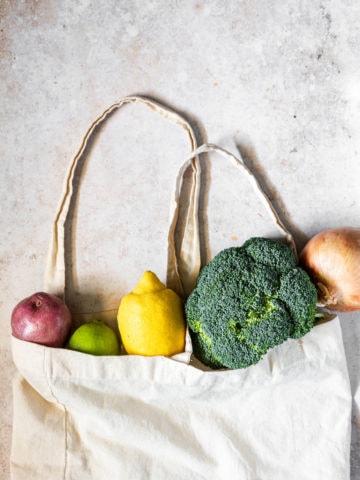

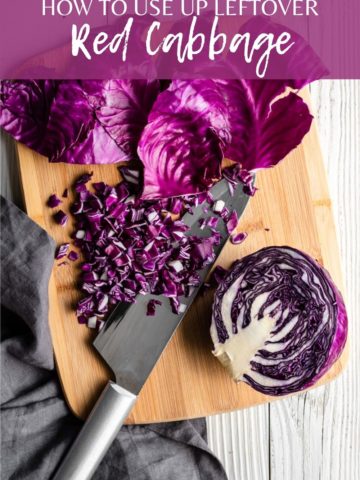
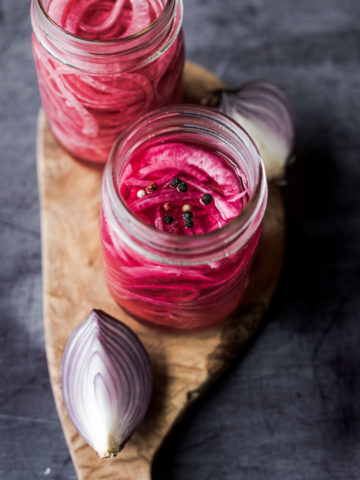
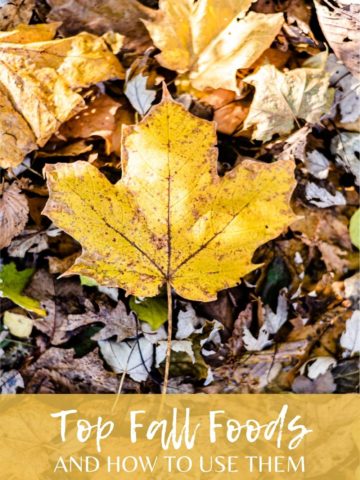
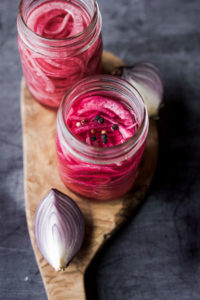


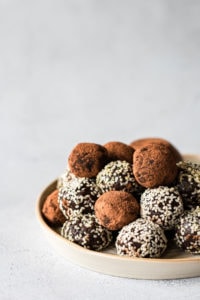
Leave a Reply